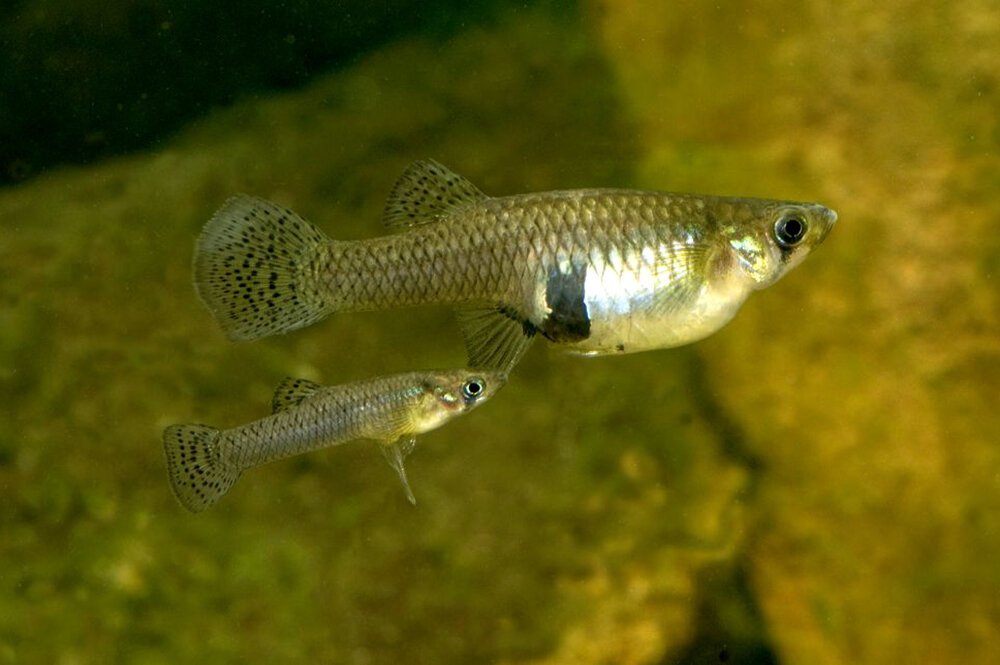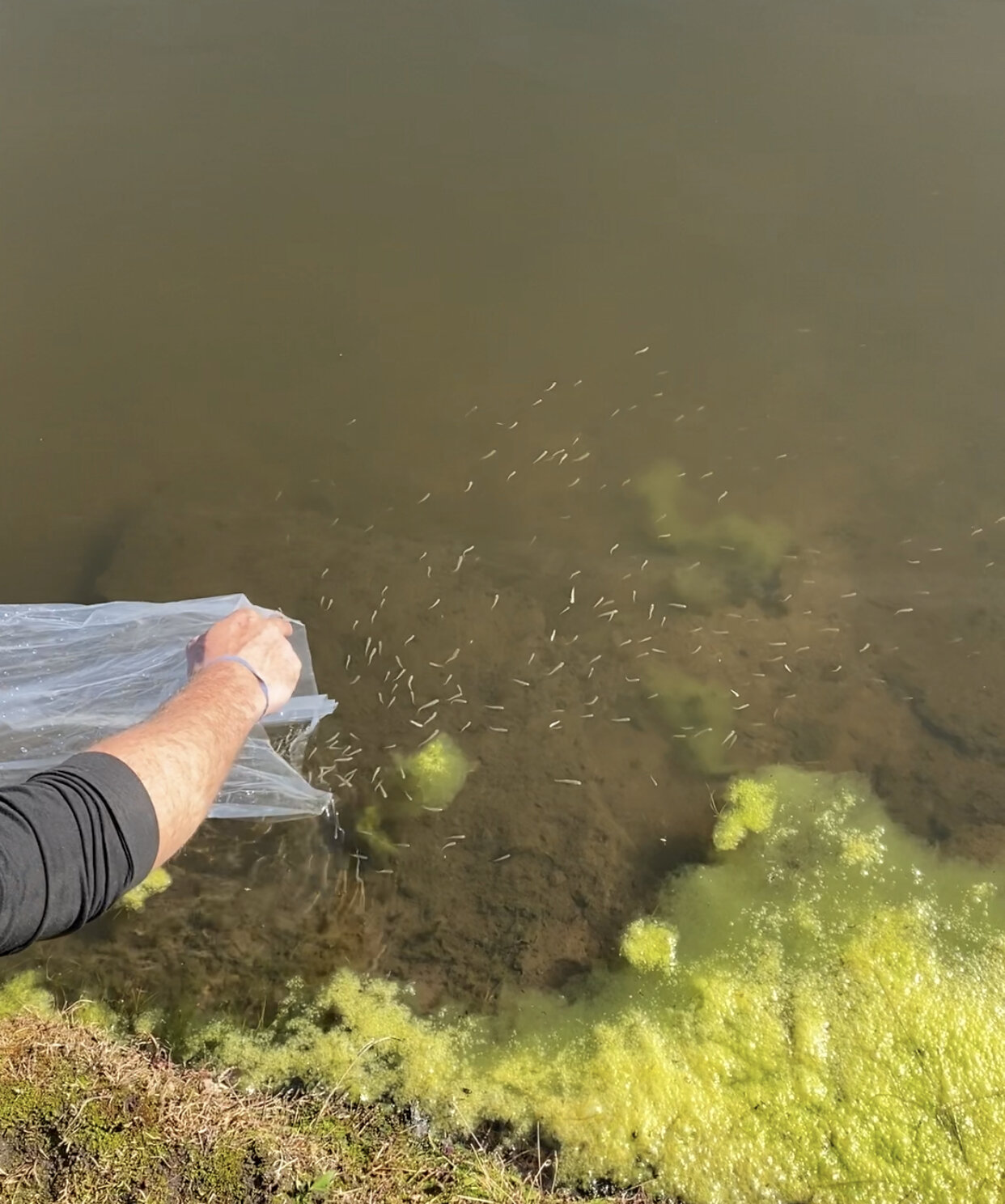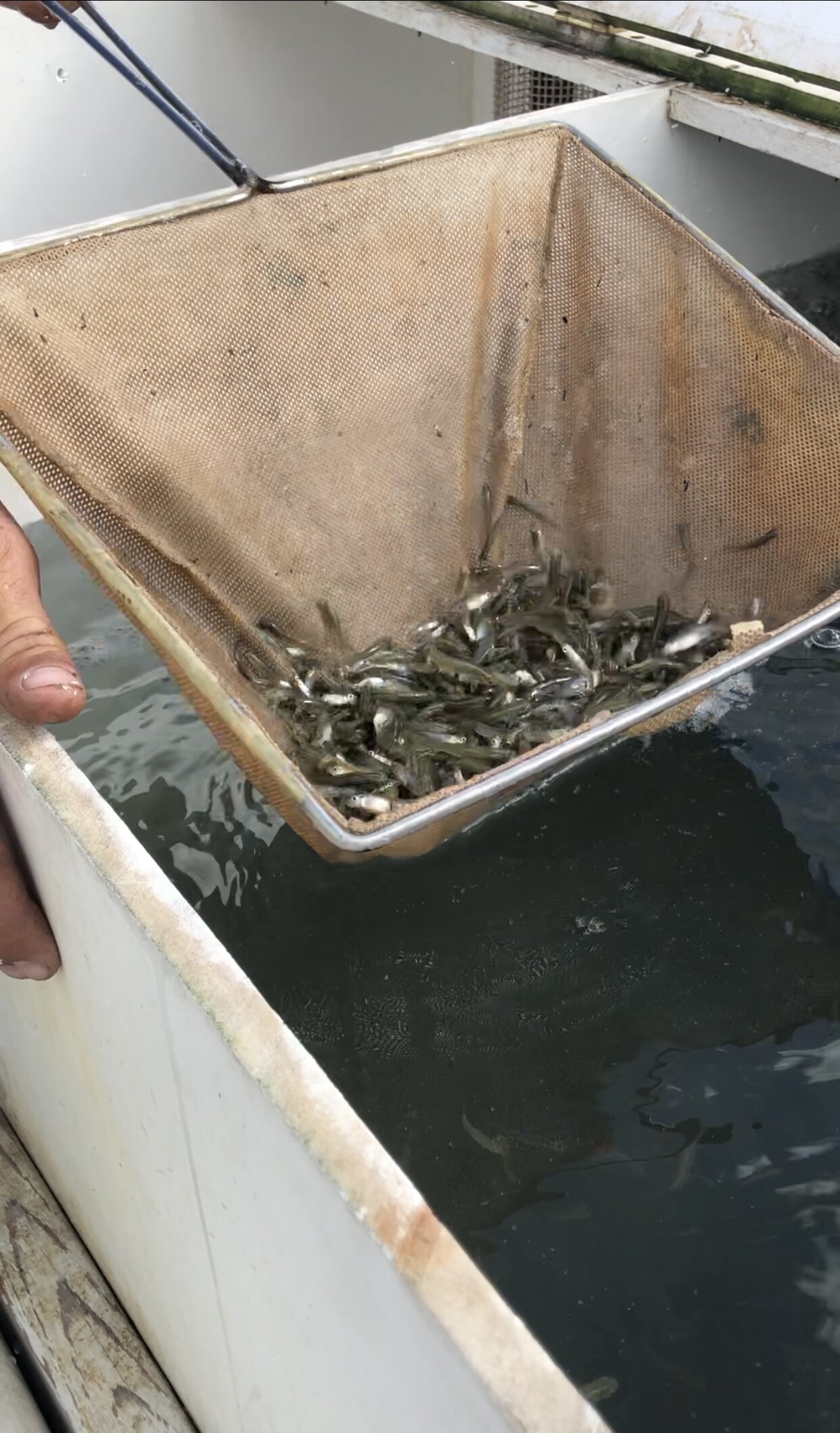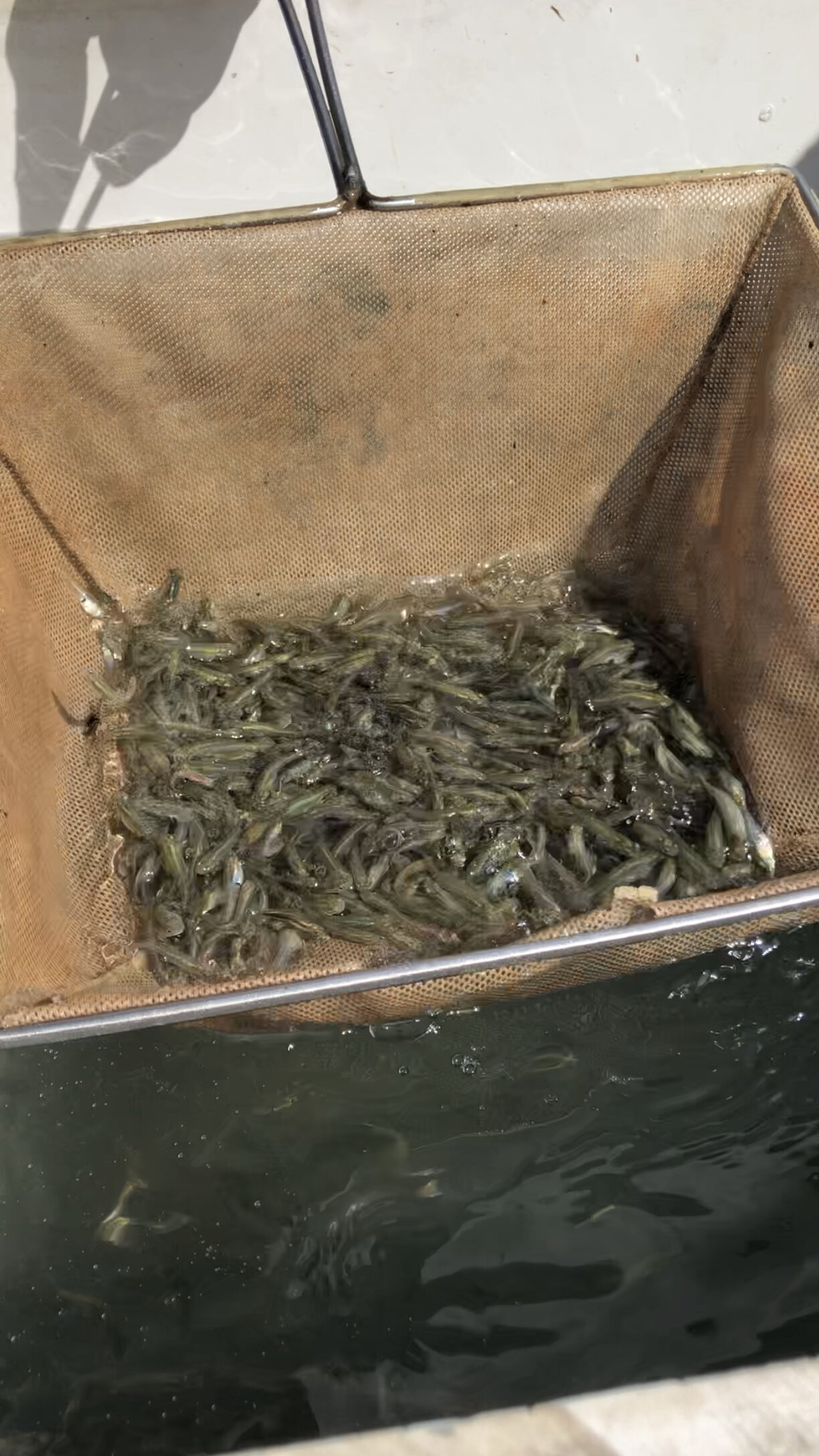Mosquito Fish
Gambusia holbrooki
The eastern mosquitofish is a native species in the Atlantic and Gulf slope drainages and is common throughout Florida (Page and Burr 2011). The north end of its range is located from New Jersey down through the eastern portion of the Atlantic seaboard reaching as far west as southern Alabama (Boschung and Mayden 2004; Page and Burr 2011). Its coloration is silver to forest green on top and on the sides and sometimes exhibits a dark bar below the eye (Boschung and Mayden 2004; Page and Burr 2011). The scales are typically outlined, giving the body a cross-hatched appearance. It also has an upturned mouth and rounded tail fin, and it reaches lengths of 2–3 inches (5–8 cm) with females being larger than males (Boschung and Mayden 2004; Page and Burr 2011). They are typically found on the surface and edges of ponds, lakes, backwaters, canals, and sluggish streams (Boschung and Mayden 2004; Page and Burr 2011). Mosquitofish can tolerate variation in water temperature, salinity, and dissolved oxygen, making them adept at surviving in stagnant pools, large puddles, and swamps (Page and Burr 2011). They are often associated with vegetated areas in these water bodies where they feed on small insects, crustaceans, and plant material (Page and Burr 2011). Most fish within the family Poeciliidae, including mosquitofish, are live bearers, meaning they give birth to live young. The eastern mosquitofish matures in 4–6 weeks and can produce broods throughout the year (Page and Burr 2011; Pyke 2008). The gestation period of the eastern mosquitofish lasts about a month, and each brood yields roughly 40 to 60 offspring; but larger broods of 350 have been documented (Boschung and Mayden 2004; Pyke 2008).
Stocking
The size of the pond and the demand for mosquitofish will determine numbers of fish to stock into your pond. Mosquitofish are prolific breeders with a quick maturation period (Pyke 2008), so they will quickly fill a pond. Just like in tank culture, they reproduce and grow faster at the higher end of their optimal temperature range (Pyke 2008). One of the benefits of pond culture is the availability of aquatic organisms for mosquitofish to feed on throughout the day (Watson and Cichra 2016). Pond culture, warm temperatures, and additional feedings ensure fast mosquitofish growth. At the University of Florida’s Tropical Aquaculture Laboratory (TAL) we feed our mosquitofish pond cultures twice daily with Purina Tropical Fish Chow Pond Meal (33% crude protein). Although mosquitofish are prolific feeders and will feed off of pellets twice their size, smaller pellet sizes will be consumed and utilized more efficiently for multiple life stages of mosquitofish. Other diets with varying protein levels can also be fed.
500/surface acre is typically recommended for adequate midge-fly/mosquito control in South Florida.








